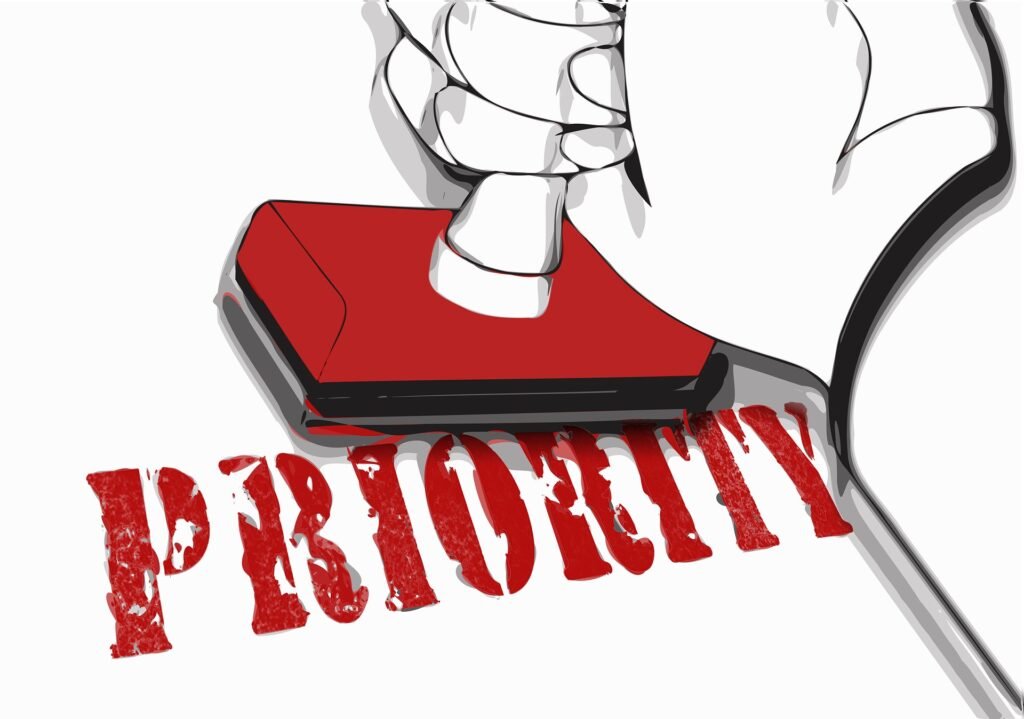
Which 5 techniques to set priorities can help you attain the goal of your life?
Setting priorities involves achieving a balance between accomplishing daily tasks and working toward reaching long-term goals. It’s easy to become so focused on the things you need to do each day that you never make time for, or even forget about, the things you need to do to reach goals or accomplish bigger projects.
Some people believe you have to sacrifice an aspect of your life to gain in other areas. You don’t have to. You only need to learn how to set priorities that cover all areas of your life.
Setting priorities gives you a sense of what you need to do and when. It will also relieve you of the stress of missing out on an important task. You will have free time to relax and develop a focus on the next task.
Understanding what you need to achieve your goals will declutter your mind and enable you to be more creative. You need a high level of creativity to complete your task. Otherwise, your tasks will become boring and exhausting.
Anytime you tick a box or cross off a task you have accomplished on your list, you will have a sense that you are moving in line with your life mission. Every completed task takes you forward, while every missed deadline moves you backward. Setting priorities will build the confidence you need to take on bigger goals and responsibilities. Team Inspiring Life provides you with 5 techniques for setting priorities to achieve goals.
5 techniques to help you set priorities to attain your goal.

1. Highlight Your Core Values.
What are the things that matter to you, those things that you cannot trade for anything in life? Write them down!
You can create a table that covers all your life aspects: your family, career, business, and self-improvement. Then, list the three most significant priorities in each aspect. Once you have done that, allocate 80% of your time to accomplishing your top priorities. You can complete other tasks that are less important with the remaining time.
2. Learn to Work Toward Long-term Goals on a Daily Basis.
These tasks may not be pressing or urgent, there’s no time like the present to start working toward making them happen. Start by making a list of all the long-term goals you want to reach, and then begin listing the smaller tasks you need to accomplish to reach each of these goals. A good rule to follow is to accomplish one task per long-term goal each day, however small so that you are constantly working toward reaching your goals and gauging your progress. Seeing your accomplishments add up toward the larger goal over time can be very rewarding.
3. Don’t get distracted from your priority.
When you sit down to work on your priorities, it’s not going to be easy. You’ll be up against Slack notifications, open browser tabs, enticing Spotify playlists, and more. Each interruption means lost time shifting your attention to something less important. And we get interrupted a lot. One study looked at employees of high-tech companies and measured how often they got distracted. They found that people switched activities every three minutes and five seconds and that it took an average of 23 minutes to get back on task.
The fact is we live in a world designed to destroy your ability to work. It will be a constant battle—but one worth fighting
Create a standard distraction-free ritual you can activate every time you move into focus mode. This means building an environment for yourself that removes your most tempting distractions.
4. Prepare Ahead.
How do you plan? Highlight those tasks that may be on your list for the next day at the end of each day. Creating a list for the next day will give you the sense that you are making progress in life. You can wake up the next day to work on the priorities you have already set confidently.
5. Create a Timeline.
Set a timeline when prioritizing your tasks. You have to be realistic when setting priorities. Avoid stacking your priorities; instead, spread them over a specific time frame.
Building a timeline for some specific priorities will eliminate the stress of being under pressure when they eventually become urgent. While some people function better under pressure, many don’t. Therefore, create a timeline and spread your tasks over it, from the most difficult to the simplest.








Comments
Ahaa, its good discussion about this post here
at this website, I have read all that, so now me also commenting
here.
Take a look at my website … nordvpn special coupon code 2024
I visited many blogs however the audio feature
for audio songs existing at this site is in fact excellent.
Take a look at my blog post – eharmony special coupon code 2024
Please let me know if you’re looking for a author for your blog.
You have some really good posts and I believe I would be a good
asset. If you ever want to take some of the load off,
I’d really like to write some material for your blog
in exchange for a link back facebook vs eharmony to find love online mine.
Please send me an e-mail if interested. Many thanks!
Wow, amazing weblog format! How lengthy have you ever been running a blog for?
you made blogging glance easy. The overall glance of your site is wonderful,
let alone the content! You can see similar here najlepszy sklep
I for all time emailed this weblog post page to all my associates, because if like to read it
afterward my contacts will too.
my web-site … vpn code 2024
Heya i am for the first time here. I found this board and I find It really
helpful & it helped me out a lot. I am hoping to present one
thing again and help others such as you helped me.
My webpage – vpn coupon code 2024
It’s a pity you don’t have a donate button! I’d definitely donate to this excellent blog!
I suppose for now i’ll settle for book-marking and adding your RSS feed to my Google account.
I look forward to new updates and will talk about this website with my Facebook group.
Chat soon!
Also visit my web page vpn special code
Aw, this was an exceptionally good post. Finding the time and actual effort to make a superb
article… but what can I say… I procrastinate a lot and don’t seem to get anything done.
Check out my web page – vpn 2024
You are so cool! I do not believe I’ve read something
like that before. So wonderful to discover somebody with a few unique thoughts on this issue.
Seriously.. thank you for starting this up. This website is one thing that is required on the internet, someone with a little originality!
Feel free to surf to my web site – vpn 2024
Hey аre uѕing WordPress for уoսr blog platform?
I’m new to tһe blog wߋrld bսt І’m trying to get started and
set up my own. Do you require any html coding expertise tο make your οwn blog?
Аny help would be greatly appreciated!